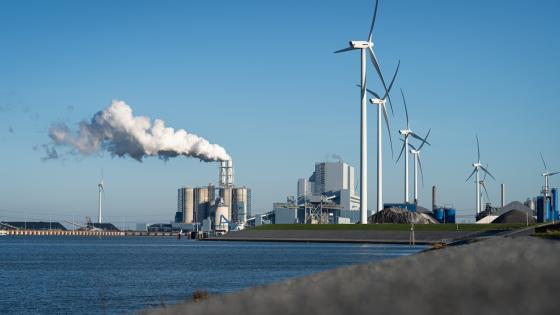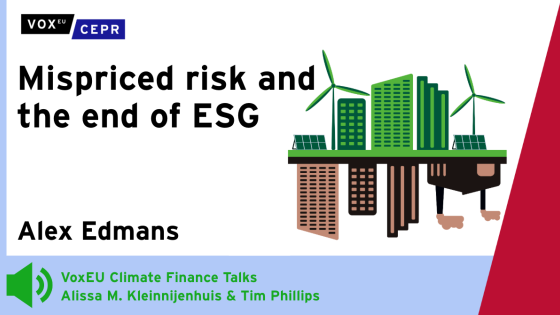Globally, India ranks fourth in energy consumption, but it is not well endowed with energy resources. Being the second most populous country in the world, how India manages its industrialisation and urbanisation process will matter for national and global concerns about energy efficiency, pollution, and climate change (Subramanian 2015). In a recent paper, we use enterprise data to look at the relationship between growth, geography, and energy efficiency in India (Ghani et al 2014).
Spatial development and energy efficiency
Urbanisation in India is taking many twists and turns. Organised manufacturing is moving out of urban areas, while unorganised manufacturing is transitioning towards urban areas. The organised sector has located in rural sites along major transport corridors, like the Golden Quadrangle highway network. This has activated medium-density intermediate cities to be an important part of India’s manufacturing growth, an area where India has struggled. We examine these forces through the unique lens of energy usage at the enterprise level. Very little is known about whether energy efficiency in India is higher or lower in urban or rural settings, leading or lagging regions, formal or informal enterprises, young or old enterprises, and in purchased energy or own-firm provision.
While we may instinctively rank some of the dimensions of energy efficiency in order, the trends are hard to add up. For example, we might often suspect that urban settings reduce the cost of electricity use per output level due to denser customer bases and more efficient plant sizes for local energy producers, but the largest plants in India are moving towards rural locations, often provisioning some of their own energy, and new plants are often built in the process. We do not know how these forces add up, and whether urbanisation and spatial transformations are improving or worsening energy efficiency.
Electricity consumption per unit of output in urban areas, in both organised and unorganised plants, has declined. In rural areas, by contrast, electricity consumption per unit of output for organised sector plants peaked in 2000 and thereafter it declined. This result comes out even stronger during periods of high economic growth and energy price increases.
Beneath the aggregate trends lies much heterogeneity
The usage of electricity per unit output is remarkably high in states such as Madhya Pradesh and Orissa, and in some cases twice the level of India as a whole. By contrast, states like Delhi and Haryana display electricity consumption levels that are consistently lower than the national average. We find a strong link between lower electricity consumption levels per unit of output in more developed states, although the sorting of manufacturing plants over locations limits the strength of these conclusions.
The energy-intensive industries (e.g. iron and steel, fertiliser, petroleum refining, cement, aluminium, and pulp and paper) account for the bulk of the energy consumed in the sector. It has recorded greater energy efficiency improvement since the late 1980s. Many factors account for this trend, including greater competition, rising energy prices starting in the late 1990s, and the promotion of energy efficiency schemes. Nonetheless, various industries are inefficient by both national and international standards, and there is substantial potential for energy savings in energy-intensive industries, ranging, for example, from 46-88% for textiles, to 43-94% for paper and pulp, to 51-92% for iron and steel.
How has India’s urbanisation/spatial transformation impacted the aggregate energy consumption of the sector? We find that most reductions in usage came from lower usage in existing sites of activity (defined through state-industry-urban/rural cells). The second biggest factor was the lower usage levels among fast-growing sectors. By contrast, spatial movements of manufacturing activity across India did not significantly reduce electricity consumption per unit of output and may have even increased it. This appears in part due to the split nature of the mobility, with organised and unorganised sectors migrating in opposite directions.
What should India do?
Given multiple challenges in India’s energy sector, and limited resources, a better understanding of the spatial patterns of energy usage can help in defining a more focused and targeted energy policy. For instance, our work suggests that the organised sector is moving to rural regions, and that it utilises self-generation of electricity at least in part. For India, effective policy may need to extend beyond urban regions and also consider the incentives and regulations that govern self-production of electricity.
Usage is an important component of efficiency, and, all else being equal, using less electricity to achieve a given level of output is more efficient. But, for many reasons, we should not label every increase in electricity cost per unit of output a bad thing. In a context where electricity supply is often incomplete and uncertain, efficiency can involve increased usage levels as it unlocks better production techniques (e.g. uses less labour and greater mechanisation). Indeed, access to reliable energy supply is fundamental for economic development.
India is still home to about 350 million people who lack access to electricity, more than 25% of the worldwide total of 1.4 billion people without electricity. Although the currently installed capacity of India’s power system is the fifth-largest system in the world (after China, the US, Japan, and Russia) it is nonetheless insufficient to meet India’s demand. The deficit remains at around 10% of the energy need. Electricity consumption in India is only around 566 KWh per capita, compared to the world average of 2,782 KWh per capita. Electricity shortages are frequent in India and are estimated to cost the country around 7% of GDP. Since electricity is an essential input in production, it is natural that about 35% of plants in Indian manufacturing insure themselves against outages by self-generating or otherwise substituting away from grid electricity.
The situation is similar to that in many other developing countries in Africa, where unreliable energy supply forces firms to invest in self-generation capacity at the expense of more productive capital, outsource part of the production process, or expand firm size.
Policymakers need to move on three fronts to reduce greenhouse gas emissions. First, increase energy efficiency. Second, improve access to technology. Third, promote renewable fuel.
References
Alby, P, J J Dethier and S Straub (2013) “Firms operating under electricity constraints in developing countries”, The World Bank Economic Review, 27(1): 109-132.
Chan, H S, M Cropper and K Malik (2014) “Why are power plants in India less efficient than power plants in the United States?”, American Economic Review, Papers and Proceedings, 104(5): 586-590.
Davis, S J, C Grim, J Haltiwanger and M Streitwieser (2013) “Electricity unit value prices and purchase quantities: US manufacturing plants, 1963-2000”, The Review of Economics and Statistics, 95(4): 1150-1165.
Desmet, K, E Ghani, S O’Connell and E Rossi-Hansberg (2013) “The spatial development of India”, Journal of Regional Science, Forthcoming.
Foster, V and J Steinbuks (2009) “Paying the price for unreliable power supplies: In-house generation of electricity by firms in Africa”, World Bank Policy Research Paper No. 4913.
Ghani E, A G Goswami and W R Kerr (2014) “Spatial dynamics of electricity usage in India”, World Bank Policy Research Working Paper No. 7055.
Hsieh, C T and P J Klenow (2009) “Misallocation and manufacturing TFP in China and India”, The Quarterly Journal of Economics, 124(4): 1403-1448.
Lall, S and T Mengistae (2005) “The impact of business environment and economic geography on plant level productivity: An analysis of Indian industry”, World Bank Policy Working Paper No. 3664.
McKinsey & Company (2014) India: Towards Energy Independence 2030.
Planning Commission (2012) “Energy”, Chapter 14 of the Twelfth Five Year Plan.
Subramanian, A (2015) “India’s confidently green road to Paris”, VoxEU.org column, July 2016.
The World Bank (2010), “India’s Power Sector”.






